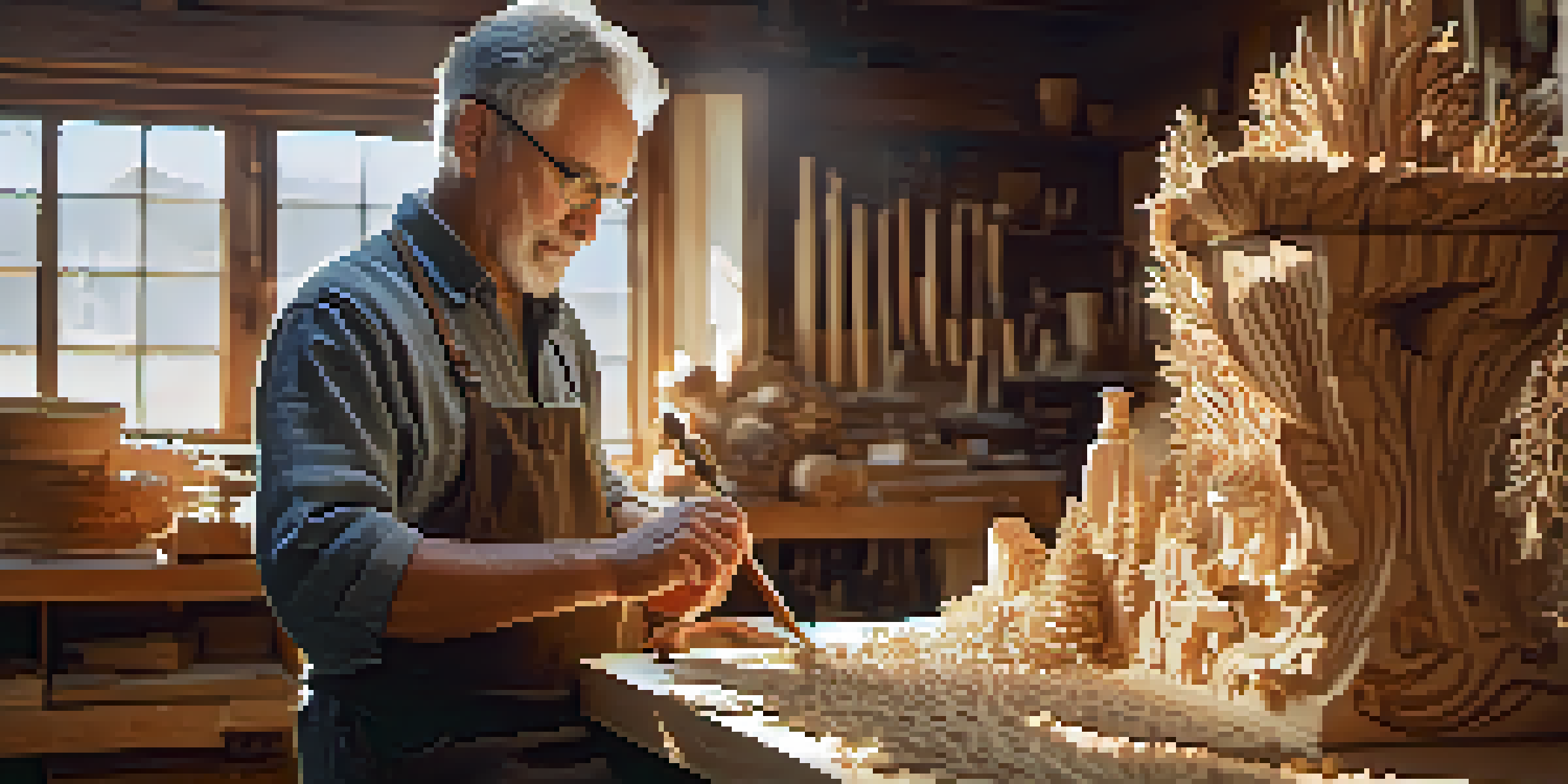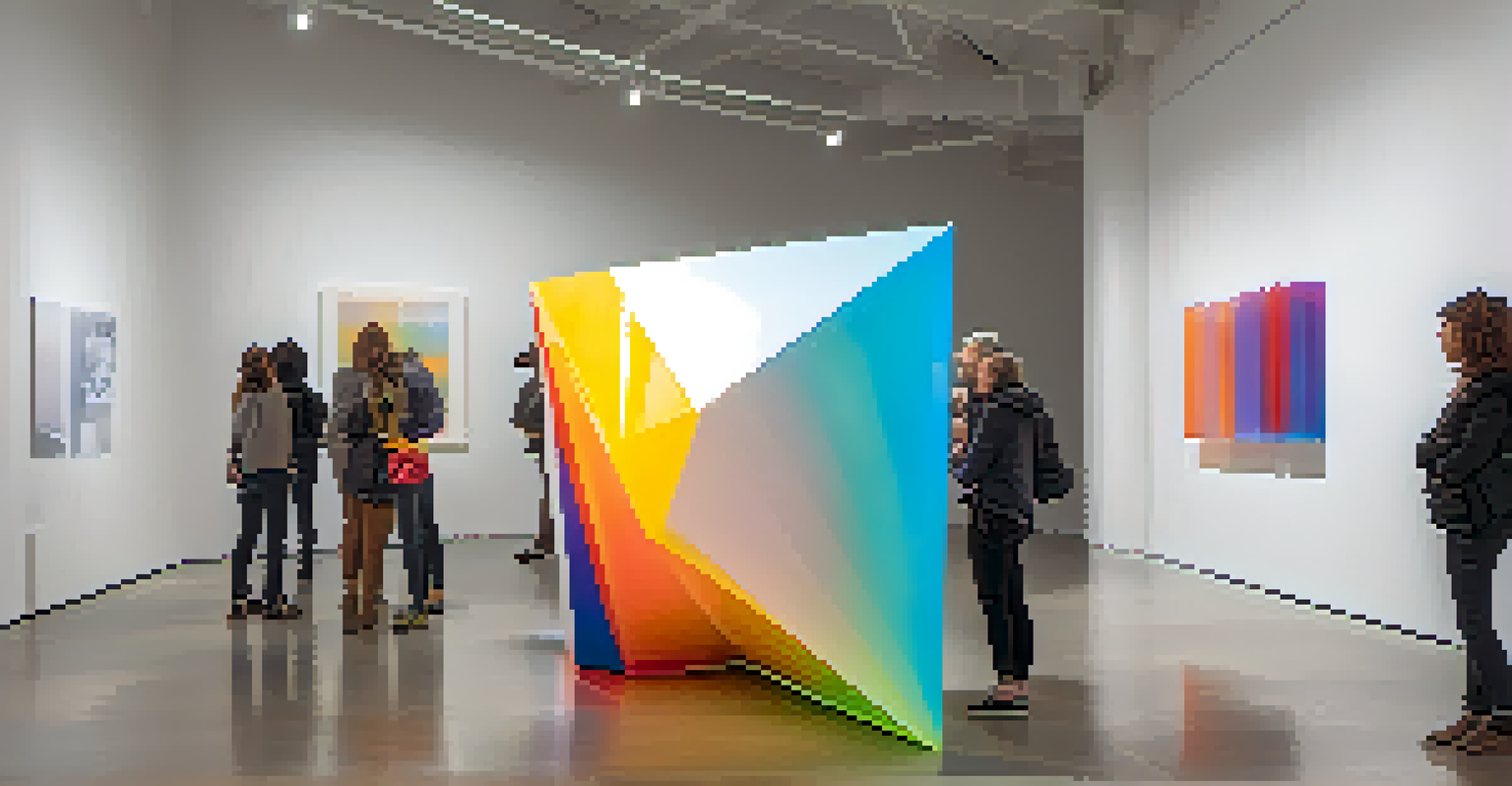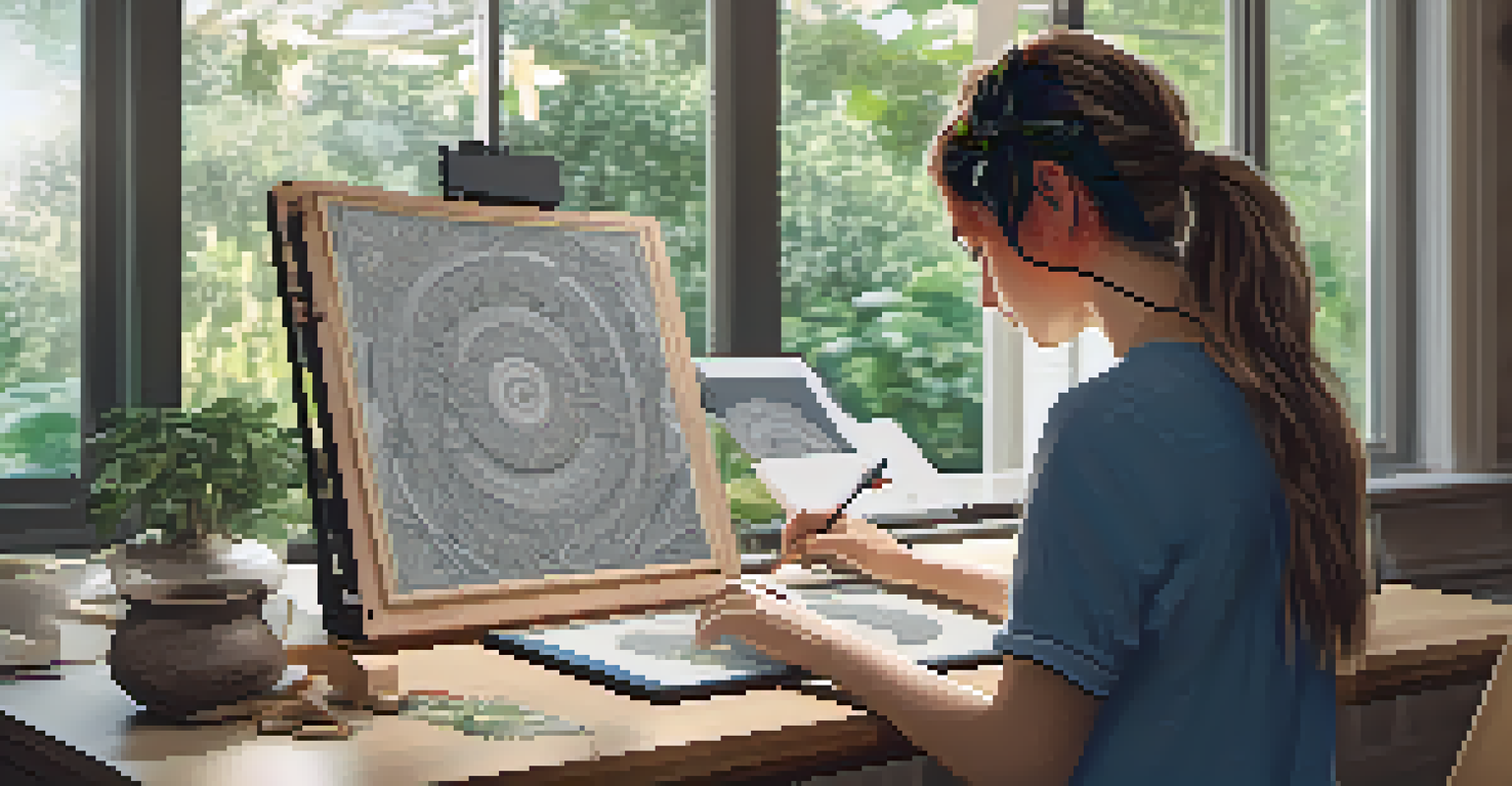Exploring the Intersection of Art and Technology in Carving

The Historical Context of Carving as an Art Form
Carving has been a fundamental art form for centuries, tracing back to ancient civilizations. From intricate sculptures in stone to delicate wood carvings, this craft has evolved alongside human creativity. Each piece tells a story, reflecting the culture and technology of its time.
Art is not freedom from discipline, but disciplined freedom.
As we explore the history of carving, we see how artisans have utilized the tools available to them—whether chisels made of stone or hand tools crafted from metal. The evolution of these tools has mirrored advancements in technology, allowing artists to push boundaries. This rich history sets the stage for the modern-day intersection of art and technology.
Today, we stand at a unique crossroads where traditional carving techniques meet modern innovations. Understanding this journey enriches our appreciation of both the art form and the technological advancements that continue to shape it.
Modern Tools: From Hand Carving to CNC Machines
In the past, carving was an entirely manual process, requiring immense skill and time. Artisans would spend hours, sometimes days, perfecting their designs with hand tools. However, the introduction of Computer Numerical Control (CNC) machines has transformed the landscape, allowing for precision and efficiency that was previously unimaginable.

CNC machines automate the carving process, enabling artists to create intricate designs with stunning accuracy. For instance, a design created digitally can be translated into a physical object with perfect replication. This shift not only speeds up production but also opens the doors to more complex designs that would be challenging to achieve by hand.
Carving's Rich Historical Evolution
Carving has evolved from ancient techniques to modern practices, reflecting cultural advancements and artistic creativity.
While some purists may argue that this technology diminishes the artistry of carving, many artists view it as a tool to enhance their creativity. By blending traditional techniques with modern machinery, they can explore new forms and styles, pushing the boundaries of what carving can be.
Digital Design Software: A New Canvas for Artists
The rise of digital design software is another game changer in the carving world. Programs like Adobe Illustrator and CAD allow artists to experiment and visualize their ideas before they even touch a piece of material. This digital canvas provides a space for creativity and exploration that traditional methods simply can't offer.
The artist is not a special kind of person; rather, each person is a special kind of artist.
Artists can play with colors, shapes, and textures, making adjustments in real-time without committing to a physical medium. This flexibility enables greater experimentation, encouraging artists to push their creative limits. For instance, an artist can try out various designs on-screen before deciding which one to carve.
Moreover, these digital tools facilitate collaboration among artists, enabling them to share ideas and techniques across the globe. The blending of traditional carving with digital design not only revitalizes the craft but also fosters a community of innovation.
3D Printing: A Revolutionary Shift in Carving
3D printing is perhaps one of the most exciting developments in the intersection of art and technology. It allows for the creation of intricate designs that can be carved or sculpted in ways that were previously unimaginable. Artists can design their pieces digitally and produce them layer by layer using various materials.
This technology not only accelerates the production process but also reduces waste, making it an eco-friendly alternative to traditional carving methods. For instance, artists can create complex geometric shapes that would be difficult to replicate by hand, leading to innovative art forms and functional pieces alike.
Technology Enhances Carving Artistry
Modern tools like CNC machines and digital design software enable artists to create intricate designs with greater efficiency and precision.
As 3D printing technology continues to advance, we can expect even more exciting developments in the art of carving. This evolution empowers artists to think outside the box and redefine what carving means in contemporary society.
Augmented Reality: Enhancing the Carving Experience
Augmented Reality (AR) is transforming how artists and audiences interact with carved art. By overlaying digital information onto the physical world, AR can provide context and depth to a carving, enriching the viewer's experience. Imagine walking up to a wooden sculpture and seeing a digital layer that explains its history and the techniques used to create it.
For artists, AR technology can assist in the design process, allowing them to visualize how their designs will look in the real world before they carve. This can lead to more informed decisions and ultimately better craftsmanship. The interplay between the real and digital worlds enhances the artistic process and the viewer's engagement.
As AR technology develops, we can anticipate more immersive experiences in galleries and studios. This not only broadens the audience's appreciation for carving but also invites a new generation of artists to explore the possibilities that technology offers.
Sustainability in Carving: Technology's Role
As artists and consumers become increasingly aware of environmental issues, sustainability is becoming a vital consideration in the carving industry. Technology plays a crucial role in this shift, offering solutions that minimize waste. For example, laser cutting can produce intricate designs with precision, leaving less material to be discarded.
Additionally, digital design tools enable artists to optimize their material usage, ensuring that every piece of wood or stone is utilized efficiently. This shift not only reduces waste but also encourages artists to explore sustainable materials, such as reclaimed wood or eco-friendly composites.
Sustainable Practices in Carving
With increasing environmental awareness, the carving industry is adopting sustainable practices through technology to minimize waste and promote eco-friendly materials.
By embracing technology, the carving community is positioning itself as a leader in sustainable practices. This commitment to the environment not only benefits the planet but also resonates with consumers who value eco-conscious artistry.
The Future of Carving: Blending Tradition with Innovation
As we look to the future of carving, it’s clear that the blend of tradition and innovation will shape the craft. Artists are increasingly finding ways to incorporate new technologies while preserving the essence of their art. This harmonious balance allows for the continued evolution of carving without losing the rich heritage that defines it.
The potential for collaboration among artists, technologists, and the public is immense. By pooling resources and ideas, we can foster an environment where creativity thrives. Workshops that combine traditional techniques with modern technology can empower new generations of artists to explore carving in innovative ways.

Ultimately, the future of carving lies in its adaptability. As technology continues to advance, so too will the techniques and styles of carving, offering endless possibilities for artistic expression while honoring the traditions that came before.